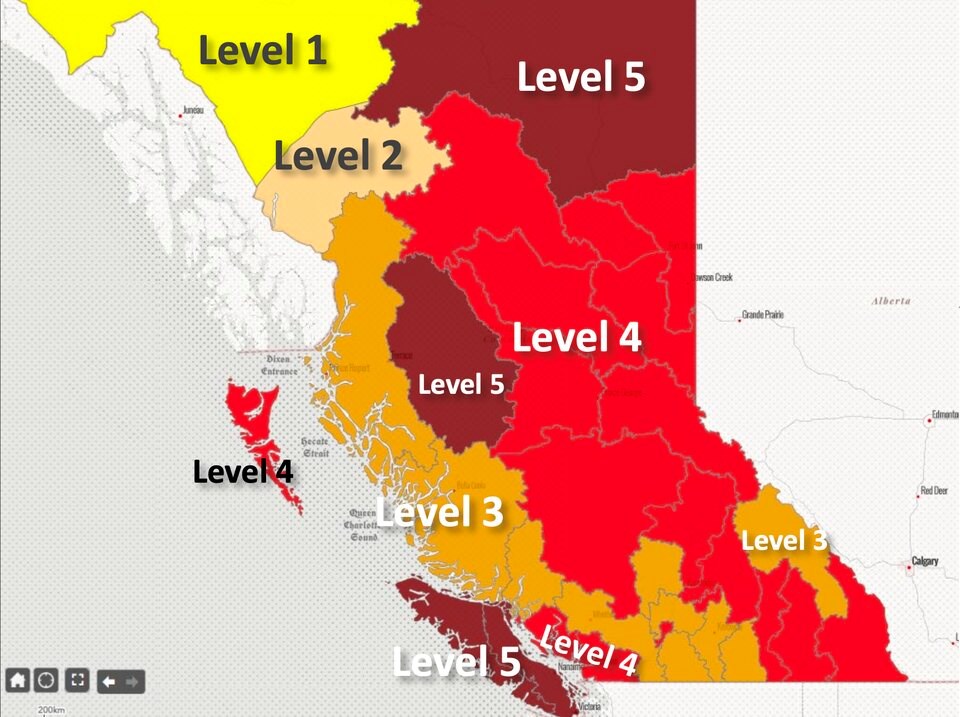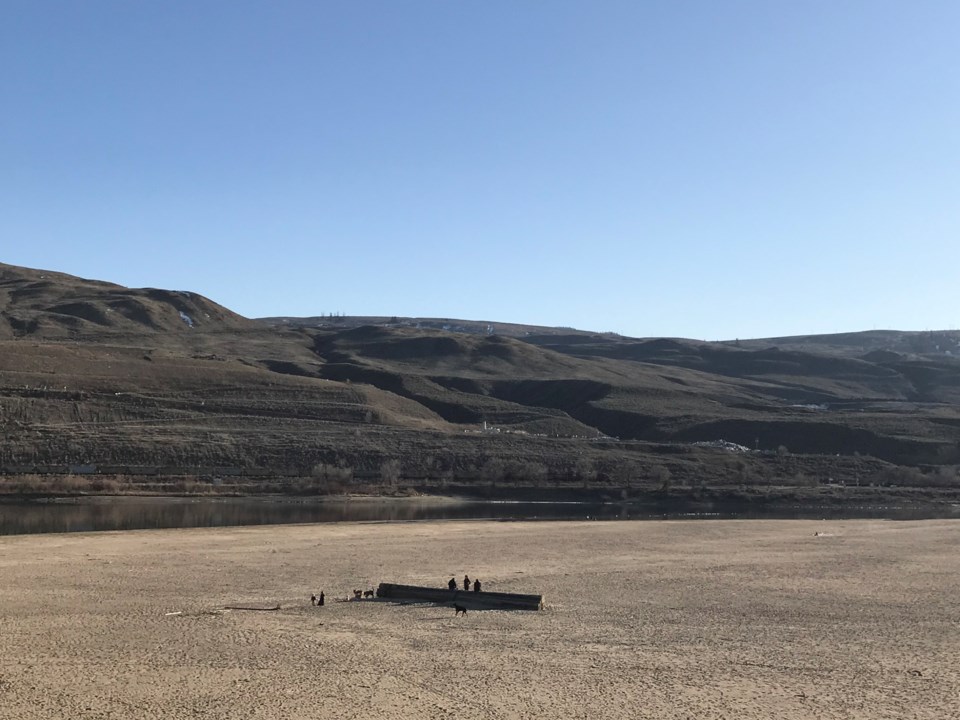More than two-thirds of British Columbia’s rivers are facing high to extreme drought conditions, requiring “action from everyone in B.C.,” said Minister of Emergency Management and Climate Readiness Bowinn Ma Thursday.
Ma she would be meeting with the province's municipalities and First Nations within hours to call for an “escalation” of water restrictions as quickly as possible.
“It is more than about today or the next week or the next few months. Extreme drought conditions can result in long-term economic impacts,” she said.
Ma called on British Columbians to build water conservation into their daily routines — consider whether or not you really need to water your lawn, take shorter showers, and run laundry and dishwashers only when fully loaded, said the minister.
“You can save 19 litres of water for every minute that you reduce the shower,” Ma said. “If each person and company makes a few small changes to how they use water, it can have a profound impact.”
Connie Chapman, a senior water resources specialist from the Ministry of Forests, said it’s working with water licensees to seek voluntary reductions, and if that doesn’t happen, “regulatory action may be required to protect the aquatic ecosystem and fisheries population.”
“It's likely more restrictions are on the way,” Chapman said.
Drought a year in the making
The extreme drought conditions come after a year in which some regions of the province received less than half the precipitation they usually get. Jonathan Boyd, a hydrologist at B.C.’s River Forecast Centre, revealed parts of the province have received as low as 40 per cent of average snow and rainfall over the past 365 days.
“We're well below anything that has ever occurred this early in the season,” said Boyd. “The story of the current drought situation really begins exactly a year ago.”
“This is a cumulative impact of drought.”
A heat wave this spring (May was the hottest in B.C.’s record) only worsened a lack of rain carrying over from 2022. The spiking temperatures melted snowpack earlier than at any point in B.C.’s record, exhausting alpine water sources that usually feed streams and rivers throughout the summer, according to Boyd.

By July 10, a quarter of the centre’s streamflow stations across the province recorded their lowest levels ever for that time of year. Some watersheds that have reached level 5 drought conditions include the Tsolum River near Courtenay, the San Juan River near Port Renfrew, and the Bulkley River near Houston.
Level 5 drought conditions indicate that it is “almost certain” there will be adverse impacts to the socio-economic or ecological value of a river system.
On the Fraser River at Hope, last year’s water levels had not reached such low levels until the first week of September, he said. Some of the hardest hit areas in B.C. include both sides of Vancouver Island, Fort Nelson and Bulkley Lake.
No sign of drought conditions lifting
The drought conditions come as B.C.’s 2023 wildfire season vaulted into the second biggest on record in terms of area burned.
“There is a correlation between drought and wildfire, and we're seeing that correlation on the ground right now,” said Cliff Chapman, director of provincial operations for the BC Wildfire Service.
Ma noted that unlike fire, drought conditions can hit rivers long before people start feeling them on the ground.
“For a lot of community members, I recognize that it might not feel real right now. We are here saying that absolutely it is real,” said the minister.
It’s not just rivers running dry. Boyd also warned that groundwater levels are dangerously low in several locations across the province. He said his biggest fear is if dry conditions persist into September and October.
Environment Canada forecasts summer temperatures to be hotter and drier than normal, but forecasts beyond 10 days get increasingly unreliable, particularly when it comes to rain.
“What’s unusual this year is how early it is and how widespread it is,” Boyd said.
“What’s going to happen? That's always a question I get asked. And the real answer is, we just don't know.”




